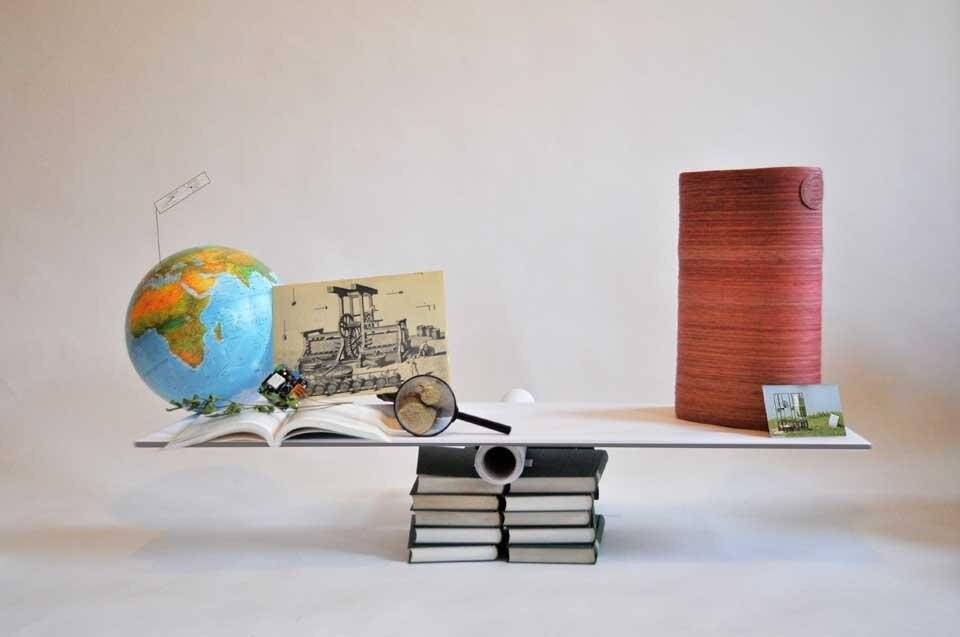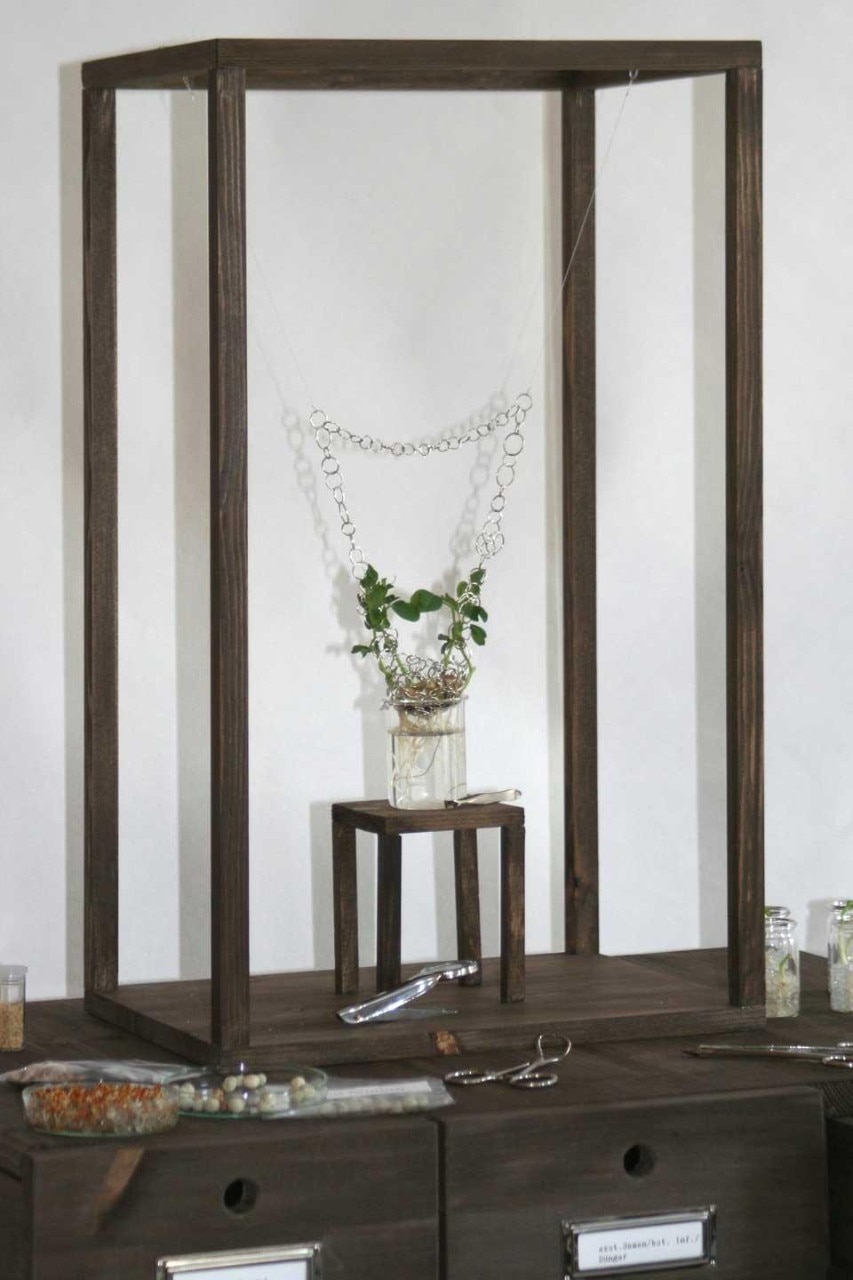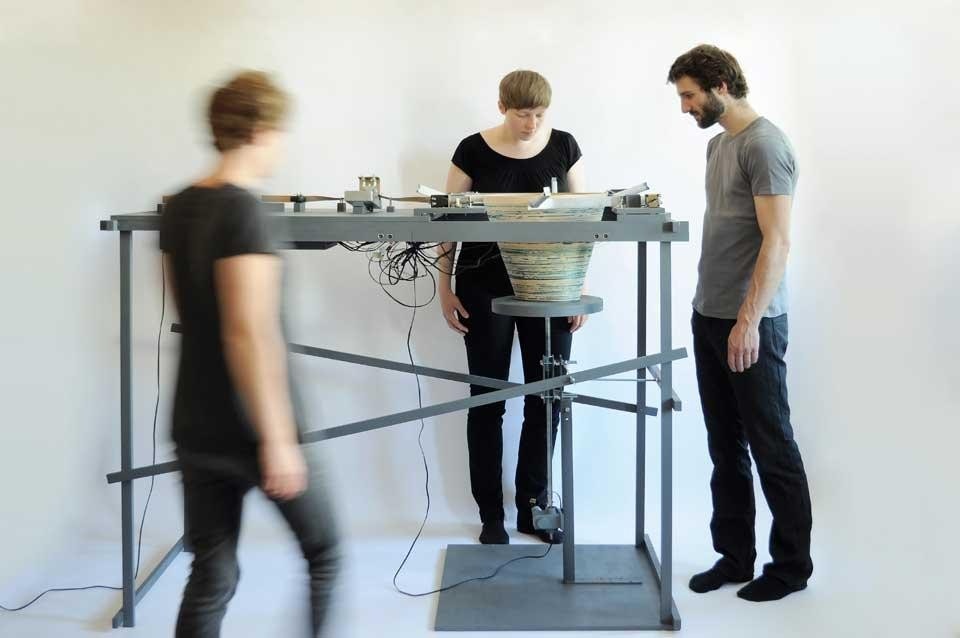For the 2012 Salone del Mobile, they have used their philosophy of life as a starting point and set out to explore the delicate balance between research and context, applied to their products and presented as a series of three-dimensional collages at the Wait & See gallery. Their Balanced exhibition features several precarious balancing acts painstakingly arranged in a constant battle against uncertainty, a narrative metaphor for the constant research into and reliance on the concept of cause and effect. By placing creative and technical material on the same plane as the finished product, Balanced is a mirror-image of their studio's modus operandi. The story of a project's transformation, along with the concept of pause and suspension, constitute the base and final aim of their latest production. "When working on a project you always have to balance input and outcome, how a project starts taking shape, the reason behind the use of certain materials, what the designer wants to demonstrate, what are the client's expectations", say Katharina and Thomas. Convinced that precariousness is intrinsic to the presentation of any new project to the wider public, visitors will be left unsure whether to touch or not to touch, as the five small micro-displays look extremely unstable and fragile. "Cause/effect is a fascinating thread that runs throughout our creative output, not only for the immediacy of the result but, primarily, because it involves instinctive reactions and hence surprises", they add. Balanced, with pieces from the idea of a tree, reversed volumes, the scientific nature of jewellery and collective works, is an opportunity to analyse previous projects with hindsight, seeing them from a new angle.

This is the principle behind the work of mischer'traxler, recipients of several awards including the 2011 Designers of the Future award at Design Miami/Basel. Their approach is one that draws users in and stimulates them without undermining the originality and fascination of the finished product. Presented in Basel in 2011, their Collective Works is a machine that only functions when surrounded by people. The larger the audience the more surprising the result, as sensors detect the human presence and, albeit passively and theoretically (there is not even the need to press a button), return the person to the centre of the production process of the single object. Thin vinyl strips are woven to produce baskets decorated with ink. These are one-offs, and the machine is an attention seeker — it stops when not surrounded by onlookers. It could be called an emotional machine, a subtle attempt to give a heart and feelings to something constructed by a person with their own hands. Stressing the importance of individuality and uniqueness, it is a unique specimen.

mischer'traxler's conceptual approach to design focuses not only on the person and his/her interaction with the machine, but also on nature — its evolution and multiple manifestations — as they drive themselves into the boldest experimentation and take design beyond the beautiful seat or perfect table. Classical design is a category that the design duo shy away from. These two Austrians see the idea as the true raison for their work. Their focus is not on the end product — although their objects are always resolved — but on what initiates the meaning and on the creation process. What is all important is the context in which Katharina and Thomas's pieces are placed and the "set up" — however complex and immediate this may be — that produces them, which is a theorem of carefully studied axioms.
The objects we make must be functional and not just decorative. We believe even the communication, when it has cultural significance, is an intrinsic part of the functionality

Do they have a good relationship with design? "We think that as professional designers we are sometimes too obsessed with design. When we watch a film, we cannot help noticing the background décor; when we go shopping, we discuss the packaging and graphic design of what we buy; and when we sit in a waiting room we notice the seating, of course. Sometimes we feel a bit silly but perhaps it's normal. You become extremely sensitive to everything linked to your passion or your life. Strangely, we are not overly concerned with the outward appearance of our apartment-studio. That's odd, isn't it? Our office must, first and foremost, be functional and comfortable." And if design is, by its nature, a profession that looks to experimentation and solving problems with a certain aesthetic component, the fascinating thing about this couple's work is their ability to surprise us, looking first at the why and then the what as they break away from the typical dynamics of this boundless discipline.
mischer'traxler's poetic works look at design and all its variations with a fresh eye, moving away from the standard models and closer to the artistic approach than to that of industrial design proper. In this sense, design is not a form of art but a separate cultural form — bringing together the functional, the emotional and the social —, developed into a special matrix in order to read reality. The work of these two designers stands out from the crowd for its atypical and unusual flair and remarkable authenticity.
When you visit Balanced, an installation that paints a clear picture of the way they work, I would suggest you hold your breath!
Wait & See Gallery
via Santa Marta 14, Milan
17 to 22 April 2012

